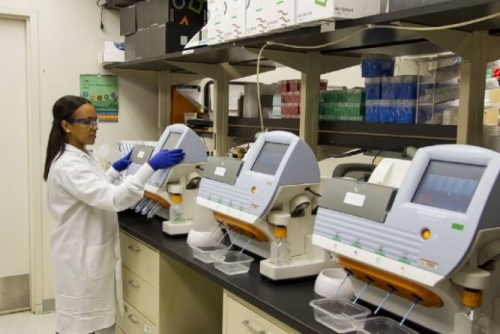Chlamydia: The Most Common Bacterial Sexually Transmitted Infection and How to Avoid It
“I never thought it would happen to me,” is the most common response when I inform a patient they have a sexually transmitted infection.
The hard to accept truth is that any sexually active person in a nonmonogamous relationship is potentially at risk. Chlamydia is the most common bacterial sexually transmitted disease in the United States. Chlamydia is known as the “silent infection. ” Most have no symptoms at all.
What is Chlamydia?
Chlamydia, caused by the bacterium Chlamydia trachomatis, is the most common bacterial sexually transmitted disease in the United States. Although easily treated with antibiotics, many infections are unrecognized. Testing is required to find it. When infections are left unchecked, chlamydia can lead to male and female infertility, ectopic pregnancy, and pelvic pain.
Chlamydia initially infects the penis and the cervix (the opening of the uterus at the back of the vagina). In women, chlamydia can progress to pelvic inflammatory disease (PID). PID occurs when bacteria spread from the cervix to the fallopian tubes. PID may result in scar tissue and permanent damage to the fallopian tubes, uterus, and surrounding tissues. In men, chlamydia can spread to the tubes surrounding the testicles causing epididymitis.
Chlamydial infections can facilitate the transmission of HIV infection.
What are the symptoms of chlamydia?
Chlamydia is known as the “silent infection.” Asymptomatic carriers pass the infection from one partner to another. An asymptomatic carrier is someone who has the disease but does not know it. Without testing, people who do not know they have chlamydia unknowingly spread the infection to their partners.
When symptoms occur, they appear one to three weeks after infection.
Most often, men have no symptoms. Some may have penile discharge, burning with urination, anal discharge or irritation around the opening of the penis.
Women typically are also asymptomatic. Some may notice unusual vaginal discharge or burning with urination. Some may experience irregular vaginal bleeding or spotting. If chlamydia spreads beyond the cervix, one may develop lower abdominal pain, low back pain, nausea, fever, pain during intercourse, or bleeding between menstrual periods.
How is chlamydia transmitted?
There are two ways most STDs are transmitted: fluid transmission or skin-to-skin contact. Chlamydia is a fluid transmitted infection. Chlamydia is transmitted when bodily fluids from one person are shared with another via vaginal, anal, or oral sex. Fluids are present in the vagina, penis mouth, and anus. Infections can occur even without ejaculation.
To keep things as clear as possible, any sexual act involving the exchange of bodily fluids allows chlamydia to spread from one person to another.
Toilet seats, doorknobs, swimming pools, hot tubs, bathtubs, shared clothing, eating utensils, or any other casual contact do not spread chlamydia.

Photo by National Cancer Institute on Unsplash
How is Chlamydia diagnosed?
Testing is required to diagnose chlamydia. A physical exam is not reliable to diagnose this infection. A healthcare provider will obtain a specimen from the cervix, anus, throat, penis, or urine. Results are usually available within 1–2 days.
The CDC recommends women under age 26, and those with risk factors get tested every year. Risk factors include new sex partners, multiple sex partners, men who have sex with men, a sex partner with concurrent partners, and a partner who has a sexually transmitted infection.
How is Chlamydia treated?
Fortunately, chlamydia is a curable STD. It is easily treated with antibiotics. such as Azithromycin or Doxycycline.
All sexual partners must be notified, evaluated, tested, and treated. If not, then one may be reinfected by an untreated partner and the infection spread to future partners.

Photo by Christin Noelle on Unsplash
Chlamydia in pregnancy
During pregnancy, untreated Chlamydia can lead to preterm labor, preterm rupture of membranes (water breaking), and premature delivery. Pregnant women may pass chlamydial infections to their babies during delivery which may result in infections in the eyes or lungs.
Antibiotics are placed over the baby’s eyes after delivery in most countries to prevent neonatal eye infections. Chlamydia is the leading cause of blindness in underdeveloped countries.
Prevention is key
Prevention is best achieved by abstinence from sexual activity or to be in a long-term, mutually monogamous relationship. The use of latex condoms consistently and correctly can reduce the risk of transmission.
Condoms are highly effective in preventing fluid transmitted STDs. Water-based lubricants should be used with latex condoms to provide the most protection.
The CDC recommends annual screening for all sexually active individuals younger than 26. Men and women with risk factors, including a new sex partner or multiple sex partners, should undergo testing. All pregnant women should undergo testing for chlamydia. Women and men with new partners should be tested for all sexually transmitted diseases.
Thank you to BeingWell for publishing this article on Medium.
Blog Author: Dr. Jeff Livingston
Blog Photo By: Joël de Vriend on Unsplash







